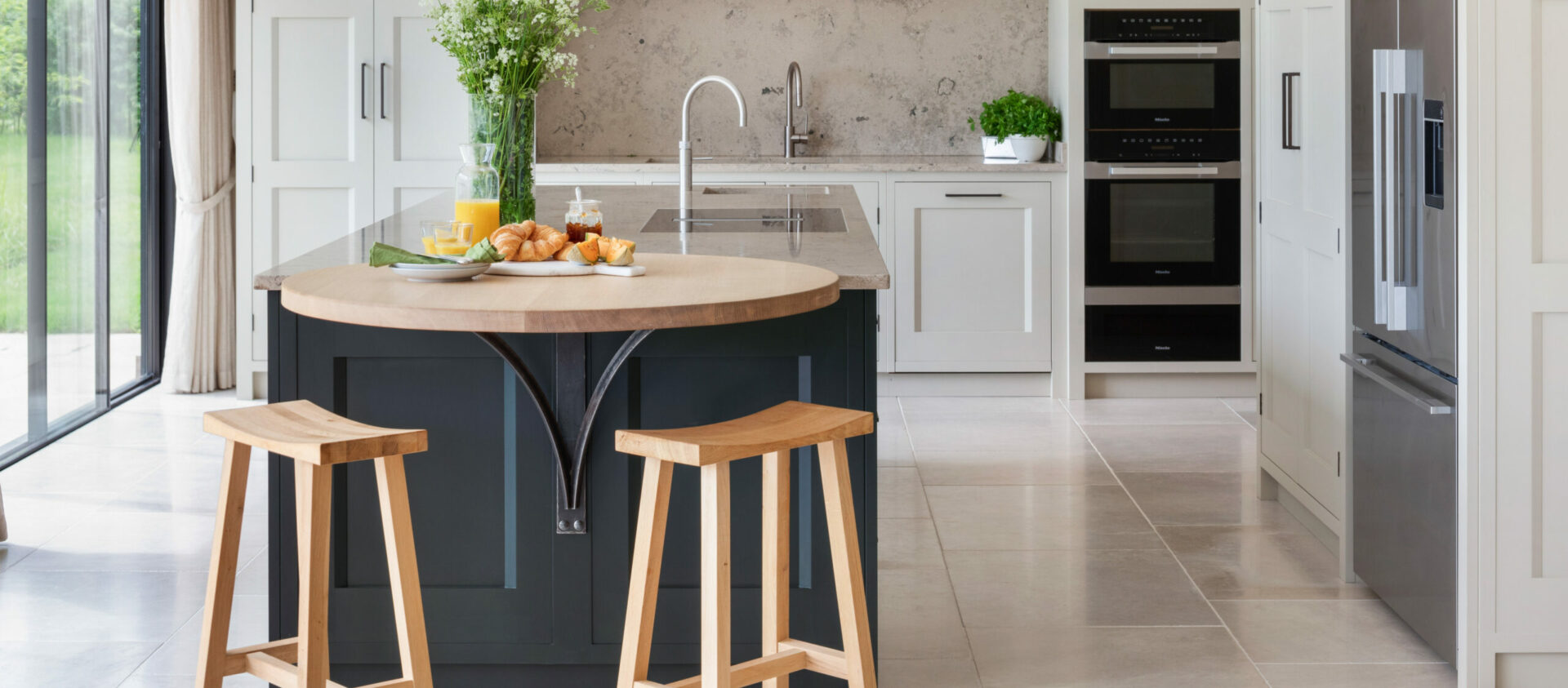Journal
What flooring options are available when designing a bespoke kitchen
What is the Best Stone or Tile Flooring for a Kitchen?
January. 2023
We explore what are the best stone and tile flooring options that are available when designing a bespoke kitchen
Once a space purely used for cooking, a kitchen has always been a high traffic area, but the modern kitchen is now a multifunctional hub, used for preparing and eating food, entertaining and socialising, homework and much more. As such, consideration needs to be made as to what floors are best for use in kitchens.
There are many options to suit different tastes and budgets; one of the most important things to consider is durability. Whatever kitchen flooring you choose must be able to withstand anything, from children to pets, from spilled food to water, it needs to work in a busy family home, and when considering what floors are best in kitchens, what you choose can also make a significant impact on the design and feel of the space.
With so many floor styles to choose from, Guild Anderson often see clients approaching their new kitchen design overwhelmed by the sheer number and variety of options. There is often a fear of getting it wrong.
What is the Best Stone or Tile Flooring for a Kitchen?
We advise selecting flooring that will be hardwearing and complimentary to the period of the house, the design of the cabinetry, and the overall feel of the space.
Stone and tile floors can act as backdrops and can add instant character to a room. Quarry tiles, flagstones or limestone can all create a feeling that they have always been part of the original fabric of the building.
Consideration needs to be made as to whether your chosen stone or tiled flooring is suitable for use with under floor heating. Does it need sealing, or re-sealing, does it scratch or stain?
Hannah Anderson points out that “one must also consider the grout colour, grout should enhance to overall look, not stand out on kitchen floors”. She adds that ” the thickness of grout lines can often be too wide and look unsightly, ideally they should be 2-3ml depending on slab size, traditionally floors were laid with penny joints.” – The grout is applied and, while still wet, an old penny is rolled along the centre of the joint guided by a rule creating a 2mm-3mm groove.
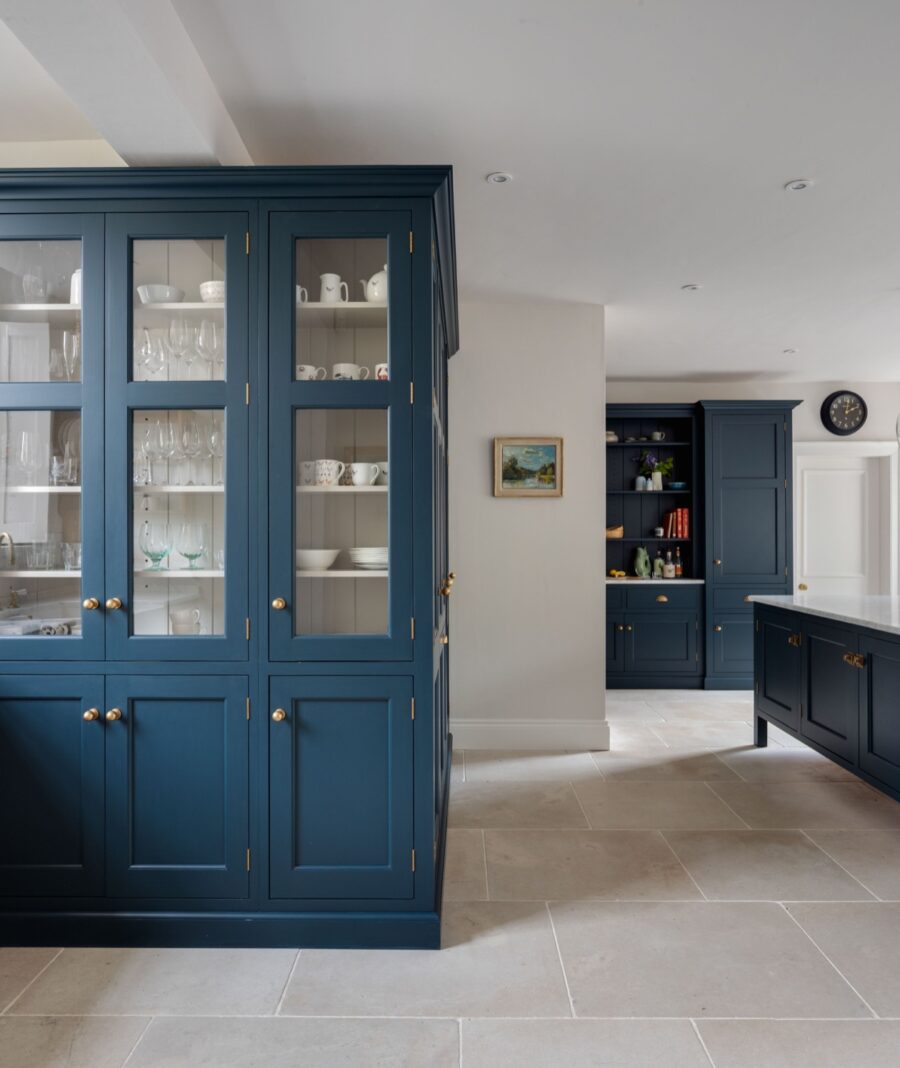
NATURAL STONE
The pyramids in Giza are the oldest existing example of natural stone flooring in the world. Using stone as flooring developed over time, the Greeks created mosaics from stone pebbles over 3000 years ago, while the Romans used natural stone flooring to help heat their homes from below, a technique we are still using with modern under floor heating today.
Stone is one of the most elegant materials for kitchen floors with a vast range of stones such as slate, limestone and marble. As a naturally durable material it is a perfect flooring option for kitchens.
Regular cleaning with a vacuum followed by washing ensures that all dust and grease are removed. Every 3-4 years a more intensive clean will remove the build up of ground in dirt, this should be followed by re-sealing to ensure that the natural stone continues to be protected.
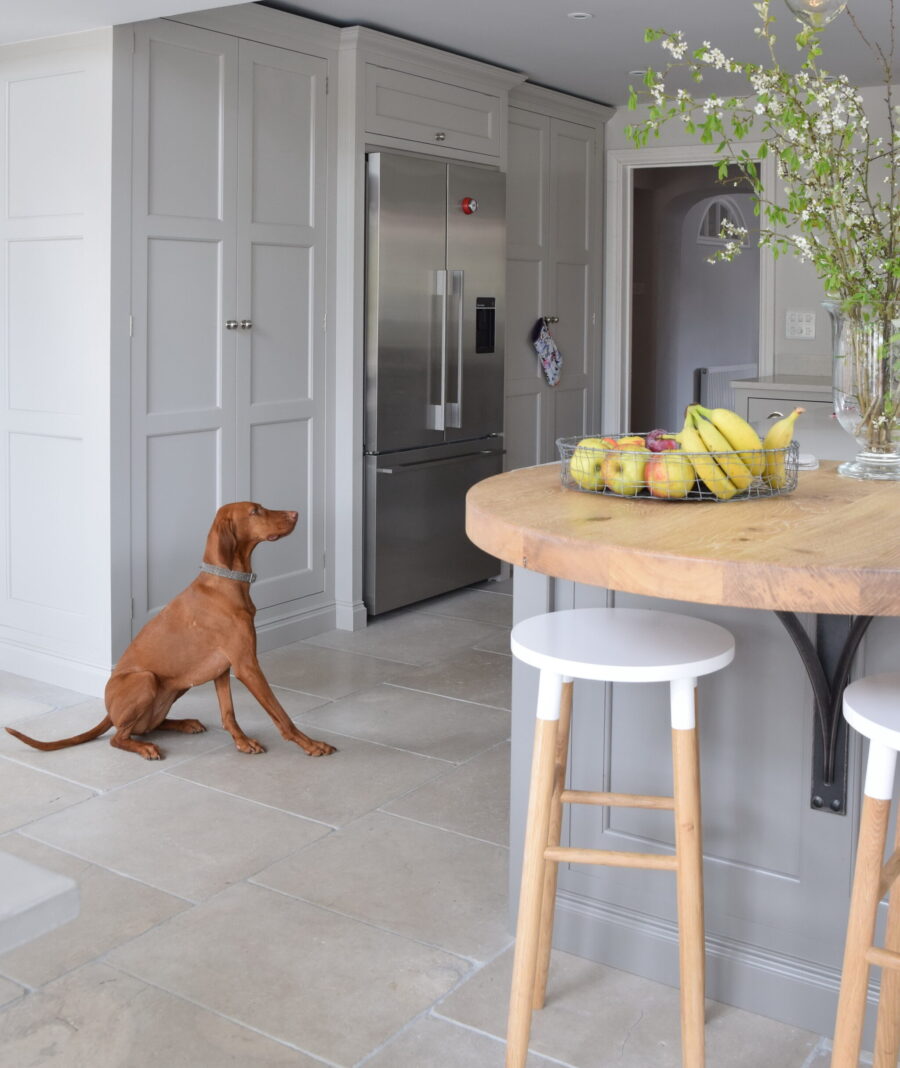
WHAT ARE THE BEST STONE FLOORING OPTIONS?
LIMESTONE
Offers an incredible array of shades and colours from creamy yellows through to greys and even black. Shells and fossils are often seen across the slabs which add to the character, and natural shading of the stone.
It is hardwearing and easy to clean. It retains heat and works brilliantly with underfloor heating. It also takes spills and knocks well and the surface can be manipulated so you can have a smooth surface or a tumbled rough surface, depending on the look you’re after.
One of the important elements to consider with a limestone floor is how it is laid. Our preferred pattern choice in a kitchen is random course layout, where the courses are the same width (usually 600mm) and the lengths are random sizes. This pattern is seen regularly in country houses and medieval ecclesiastical buildings.
TRAVERTINE
Is a type of limestone, formed by hot mineral springs, which creates many holes running through it, these holes can be filled to give a smoother surface. Colours are natural, ranging from white through to cream and rust, depending on the minerals present in the area in which it was formed.
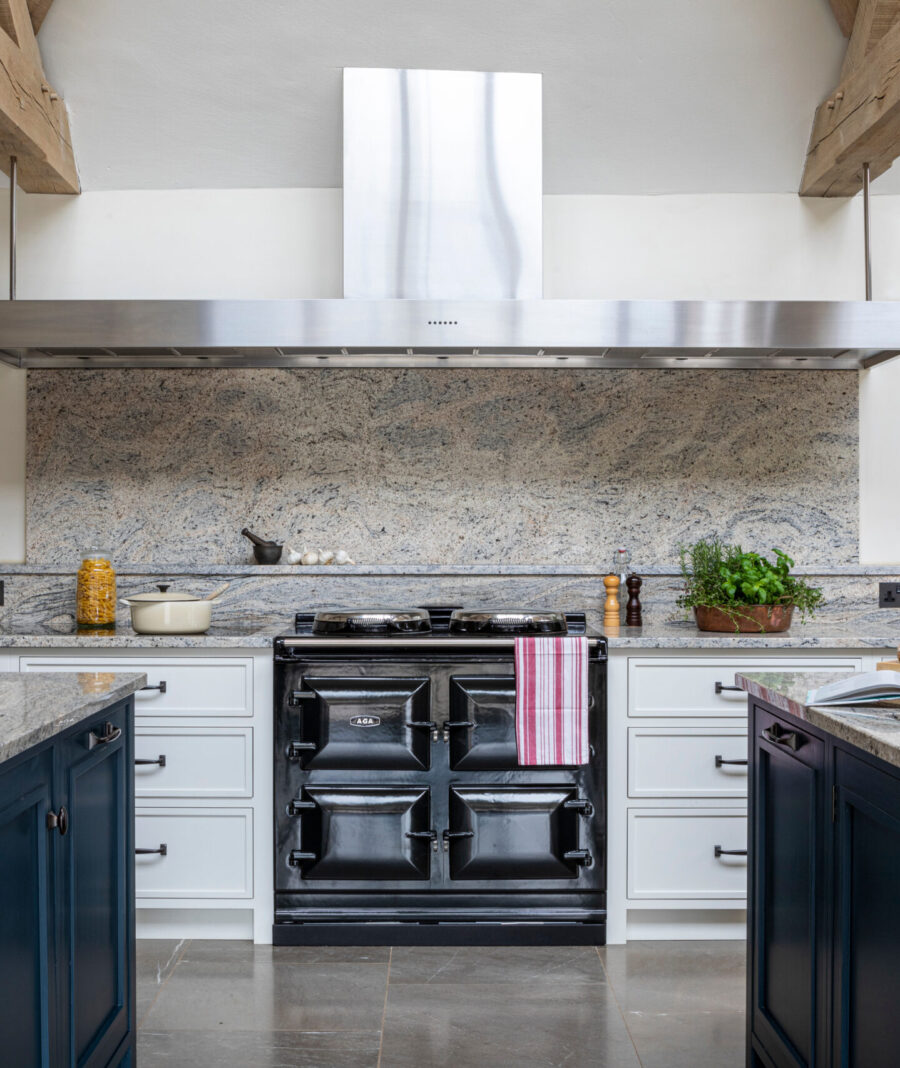
MARBLE
Comes in some mesmerising colours, markings and veining. Each made by a process called recrystallisation, and the colouring is created by the minerals present in the area in which it was formed. Cold to the touch, it can be polished to a glass-like smoothness. It can add instant character to your kitchen design.
SANDSTONE
If you are looking for a seamless connection from inside to outdoors, then Sandstone flooring may be an option. It is a hard wearing natural stone made up of grains of sand that are compacted and bound together by mineral such as clay or silica.
SLATE
Naturally harder than Limestone or Marble, Slate is made of volcanic ash or clay. When quarried Slate is split in to thin sheets, this process gives undulations in the surface, offering texture and sometimes veins of colour.
GRANITE
Is a coarse grained hard stone, formed through slow crystallisation of magma which gives the granite it’s texture. Available in a vast array of colours from whites, blues, reds, pinks and greens.
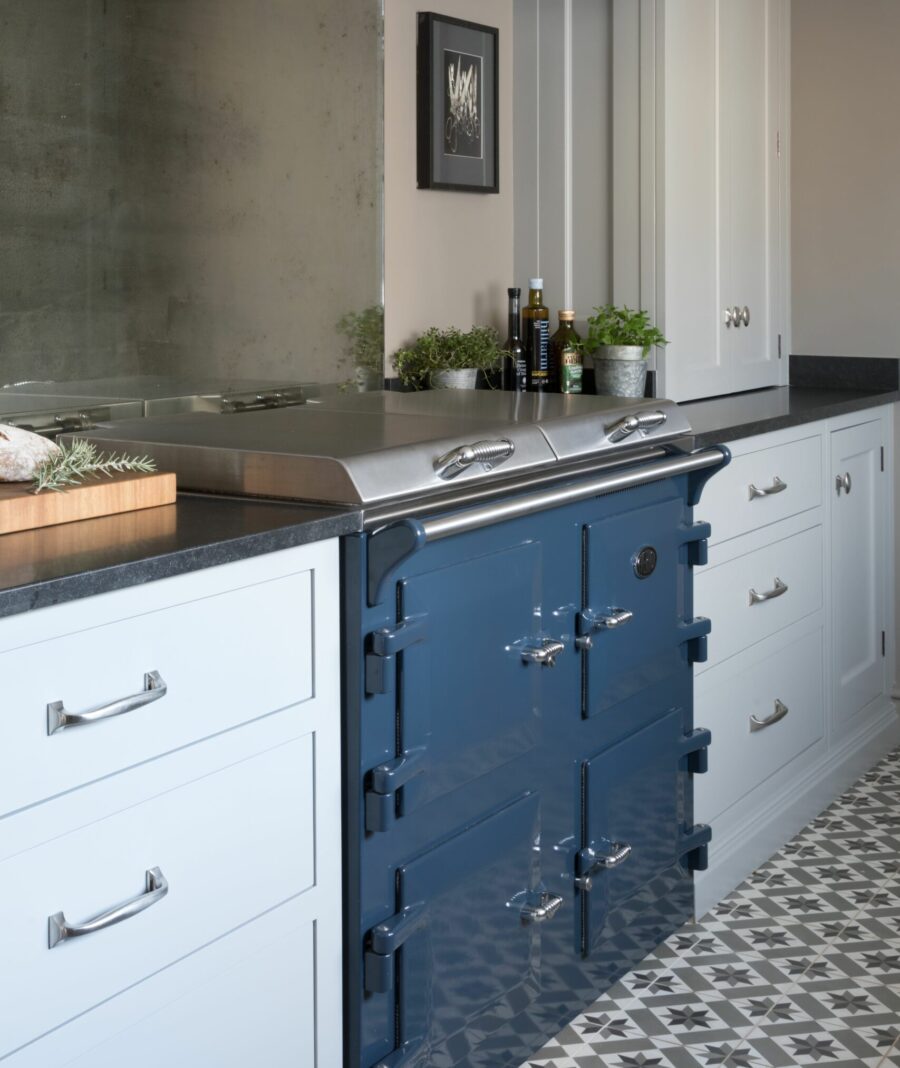
TILES
On walls tiles will offer protection to working areas such as behind a hob, or acting as a splash back. As flooring they offer an easy to clean, hardwearing alternative to natural stone.
There are an infinite range of options when it comes to choosing tiles. From historic ceramics through to modern porcelains, it can feel that sometimes there are too many to chose from.
Guild Anderson suggest using the cabinetry colour or a chosen fabric to dictate the choice of tiles. This will create a more cohesive look to your finished kitchen design.
There are some beautiful tiles available that will enhance a bespoke kitchen design, with textile designers such as Neisha Crosland collaborating with Alvaro de Ferranti and Fired Earth to produce the most stunning collections.
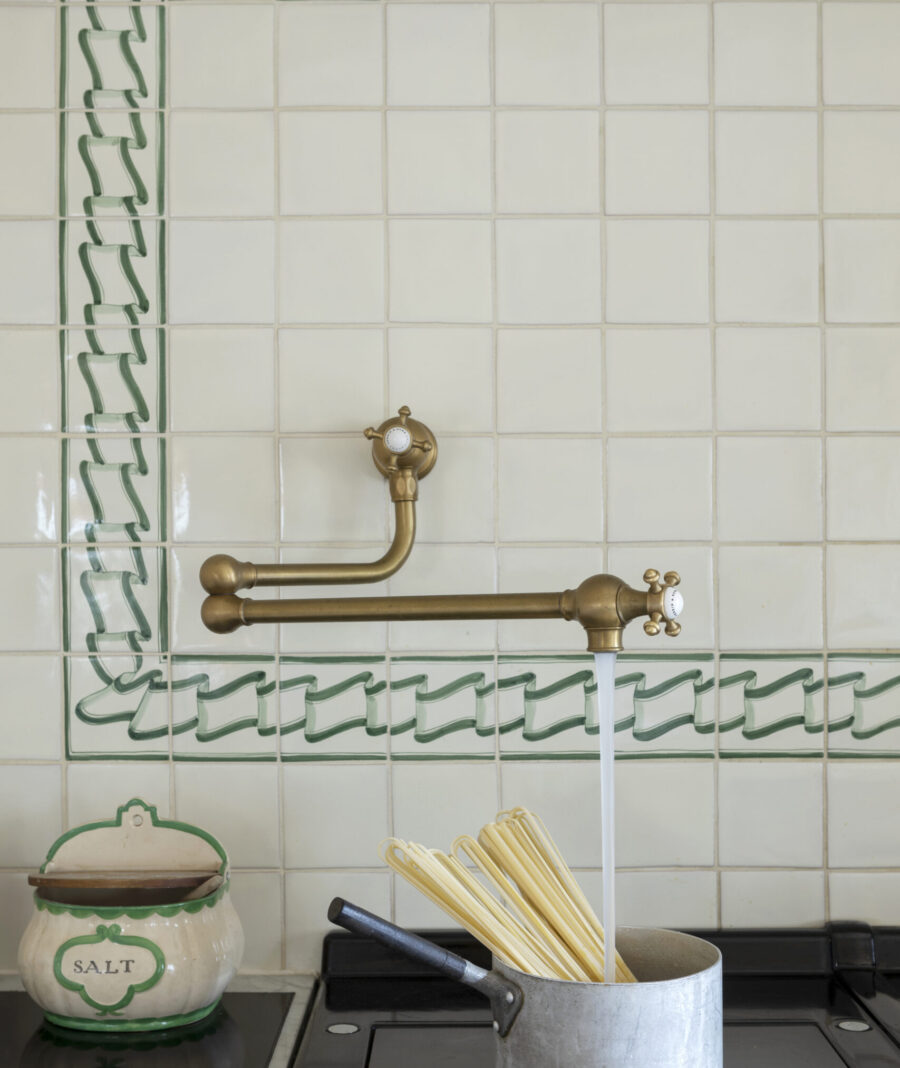
WHAT ARE THE BEST TILE OPTIONS?
CERAMIC TILES
The earliest use of decorative tiles was found in Egypt, dating from about 4000 BC. With such a long history, ceramic tiles are considered the most popular choice for kitchen floors as they are durable and come a in wide variety of sizes, colours and designs. Ceramic tiles are usually glazed with a base colour and can be then over-printed or hand painted with a pattern.
However as they need grouting between each tile, when used as a flooring option, they can become dirty.
TERRACOTA TILES
Terracotta is technically a ceramic material, the earthenware is made from shaping, drying and firing at a high temperature using a reddish clay which gives it its colour. When considering terra cotta tile for your kitchen floor, be sure to pick a high-density material, as low-density ones are porous and susceptible to staining and water damage.
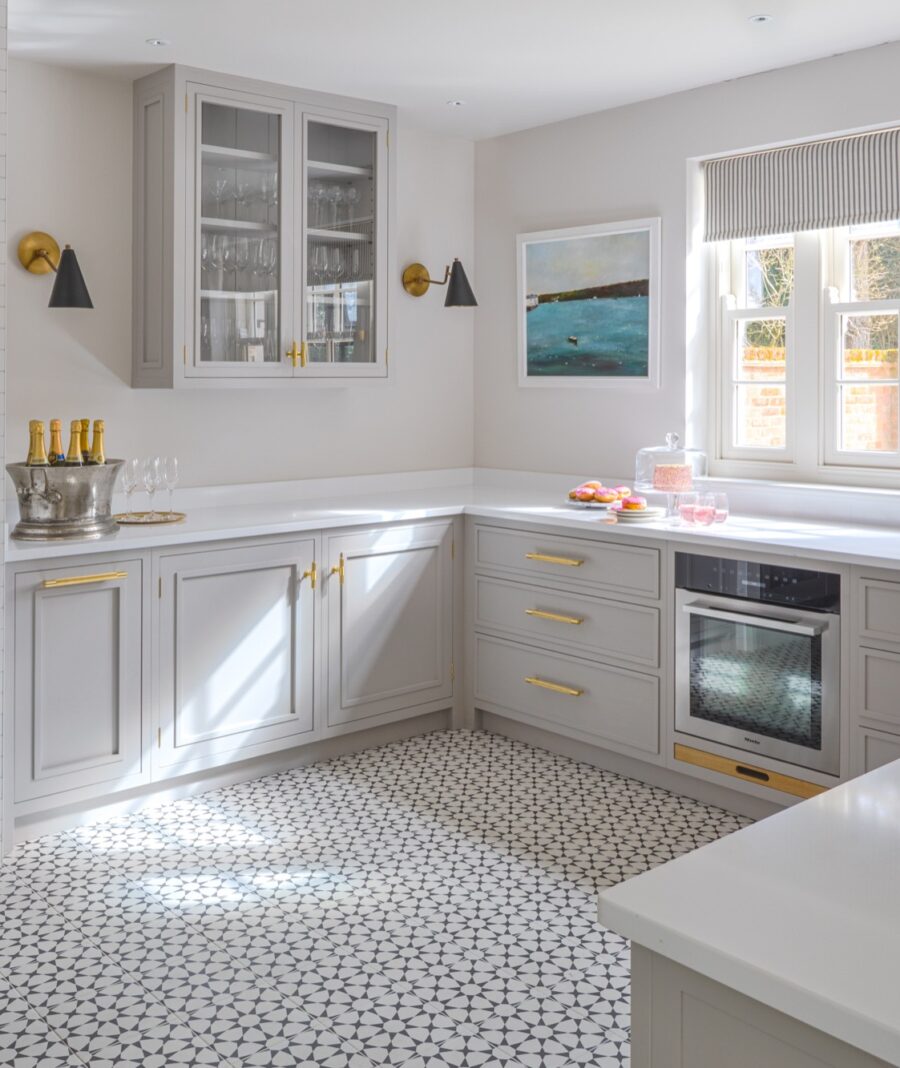
MOSAIC TILES
Mosaics can be dated back to ancient Mesopotamia – more than 5,000 years ago – starting out merely as combination of small pieces of stone or rounded pebbles that had been pieced together.
It typically includes fragments of coloured stone, glass, or ceramic tiles.
ENCAUSTIC TILES
These are a type of cement tile where the pattern is inlaid into the body of the tile so that the design and colour remain, even as the tile wears.
A little more heavy than the average wall tile encaustic tiles can be used on almost any internal floor or wall surface. They can fade slightly, which is part of the natural ageing process, but the use of sealant can stop this.
PORCELAIN TILES
This manmade tile is made from a mixture of clays and minerals and fired at a very high temperature. A wonderful medium that takes different colour glazes, patterns and decorative treatments, it is often designed to mimic natural stone, concrete or wood.
They can also be lower in maintenance and upkeep than natural stones and can come in large format tiles for a more modern look.
There are several companies that offer an extensive range of tiles


